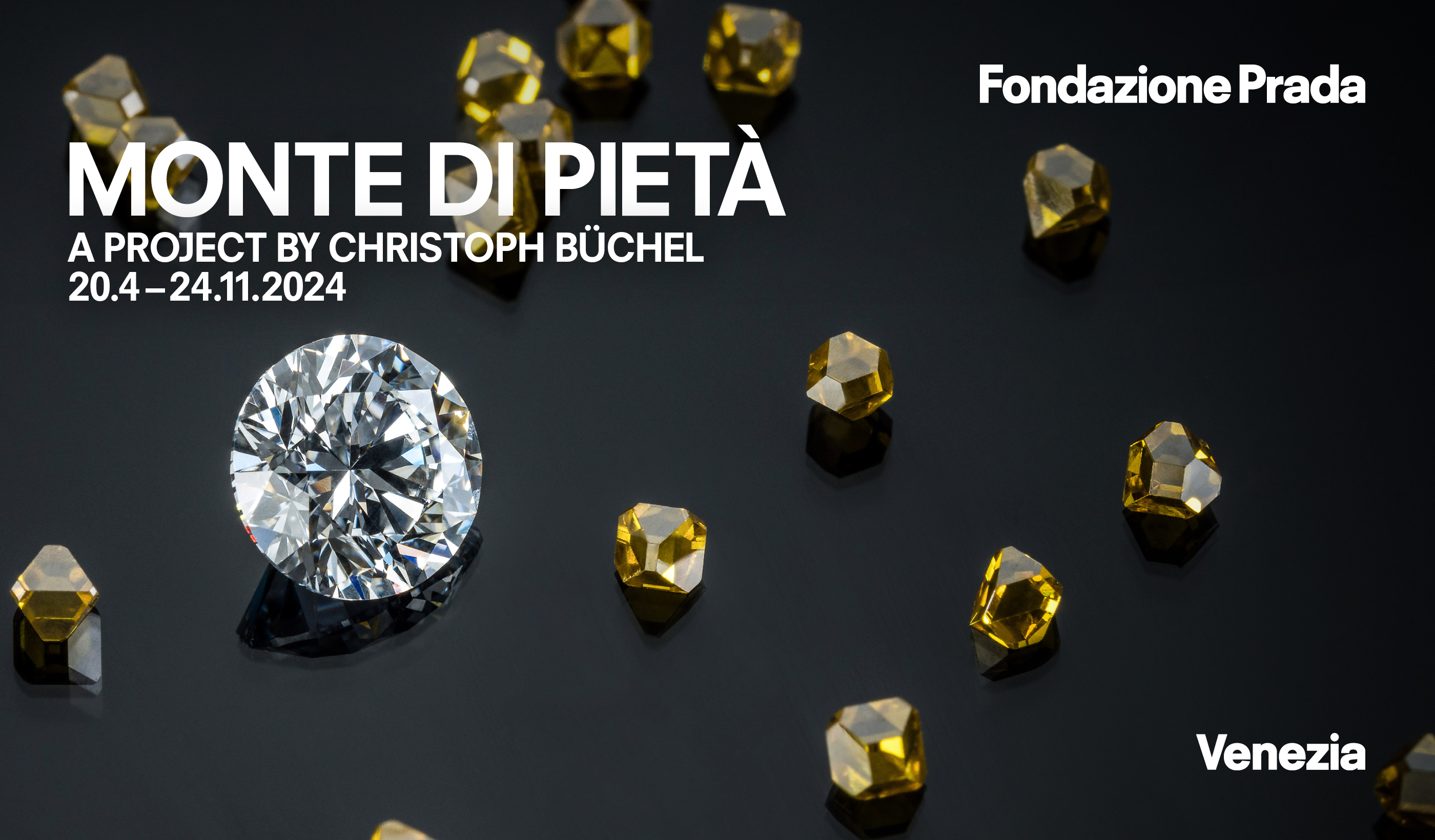A project created by Christoph Büchel and presented by the Fondazione Prada
On 19 April 2024, Fondazione Prada presented Christoph Büchel's 'Monte di Pietà' project in the eighteenth-century Palazzo Ca' Corner della Regina, in Venice.
Drawing inspiration from the history of the Palazzo, which was home to Venice's Monte di Pietà from 1834 to 1969, Büchel's project traces a complex network of spatial, economic and cultural references to create an immersive installation.
MUDEM contributed to this project by lending around 50 objects from the Bank of Italy's collection, including 11 Mesopotamian clay cuneiform tablets (some of which are over 4,000 years old) and several pieces from the Voltolina Collection that was recently acquired by the Money Museum (examples include lance- and knife-shaped money, swords, javelin tips, bone and ivory sticks, coin-necklaces, pearls and shells).
So, how do these curious objects fit into Büchel's project?
'Monte di Pietà' is an investigation into the concept of debt as underpinning human society and as a primary means for exercising political and cultural power since the beginning of time. Venice was historically a hub where business and art intermingled and traded, and is the ideal context for exploring the relationships between these complex topics and the profound dynamics of contemporary society.
The project recreates a failing pawnbrokers modelled on Venice's original Monte di Pietà. This is the setting for Christoph Büchel's The Diamond Maker (2020-ongoing), a piece of work involving a suitcase containing lab-grown diamonds. The diamonds are the result of a physical and symbolic process of destruction and transformation of the collection of works of art owned by the artist, including those from his childhood and youth and continuing with those yet to be created.
'Monte di Pietà' includes new productions, references to Büchel's previous installations, a mixed selection of objects, historical and contemporary works of art and documents relating to loans and finance, to the birth of collections and archives, and to the creation and meaning of real or artificial wealth.
'Monte di Pietà' crosses the uncertain boundaries between the physical and virtual dimensions of our contemporary world. Thanks to the online work of a granfluencer and to the launch of a cryptocurrency, the project explores the intangibility and volatility of financial transactions in the digital sphere that almost alchemically burn wealth to produce new value. The speculative mechanisms behind cryptocurrencies are turned around to benefit people born or resident in the city of Venice. This token has been named Schei and is promoted on TikTok by the granfluencer Regina de Schei with the aim of engendering new profits and distributing them among the people of Venice.
The Catholic institutions known as the Monti di Pietà were founded in the 15th century and allowed the less well-off to receive loans at a low interest rate. They used funds from charitable donors as capital and granted loans to people with modest incomes. Borrowers provided valuables as collateral, making the Monte di Pietà something between a pawnbrokers and a bank.
Every object had its own personal story involving a debt and a loan, an interest rate, and a selling price if the debtor didn't come back and pay off the loan and its interest by a given date.
After various failed attempts between the 16th and 18th centuries, the Banco Pignoratizio Comunale was founded in Venice in 1806. The Cassa di Venezia, a local bank open to the general public, was created in 1822, and, together with the Banco Pignoratizio, it could fund pawn lending via the collection of savings. It took the name of Monte di Pietà di Venezia in 1834 and moved its headquarters to the prestigious Palazzo Ca' Corner della Regina.
In western history, debt, virtual money and the birth of cash are intrinsically linked to the management of power that makes it possible to expand and accumulate. Debt has always played a fundamental role in social and political upsets, and governments throughout history have wiped out debts many times, often in order to restore the pre-existing social order. Specifically, the Republic of Venice was a mercantile state that contributed to the birth of modern financial markets based on debt and on the legal recognition of intellectual property.
Debt is also closely linked to the practices of stockpiling and accumulating tangible and intangible assets. Both the art system and museum institutions play an important role in preserving heritage and collections and in assigning a symbolic and economic value to assets and objects. In this context, the Bank of Italy's Mesopotamian tablets are evidence of the first financial transactions in history, including real loan contracts, which link the concept of credit to the development of every complex civilization in which there is a division of labour. The ethnographic objects in the Voltolina Collection instead are examples of the most unusual forms of money, typically from the four non-European continents, and usually also embody complex social and cultural relationships.
You can visit the exhibition in the rooms of Fondazione Prada in Venice until 24 November 2024.
For more information on the exhibition, click here.







